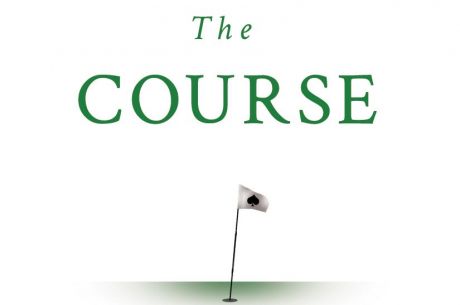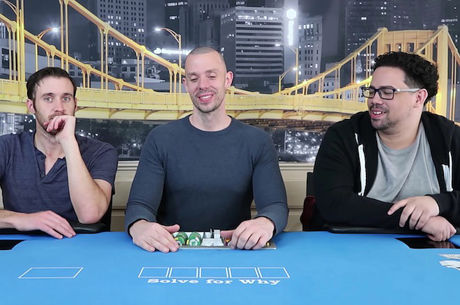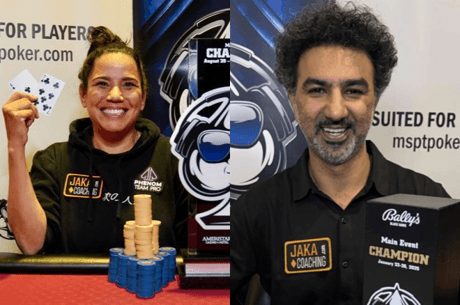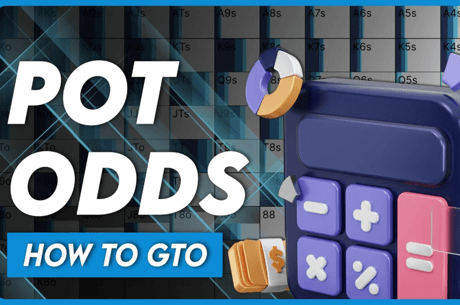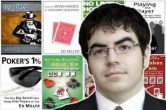A Look at James Sweeney's New Video Series 'The One Percent'
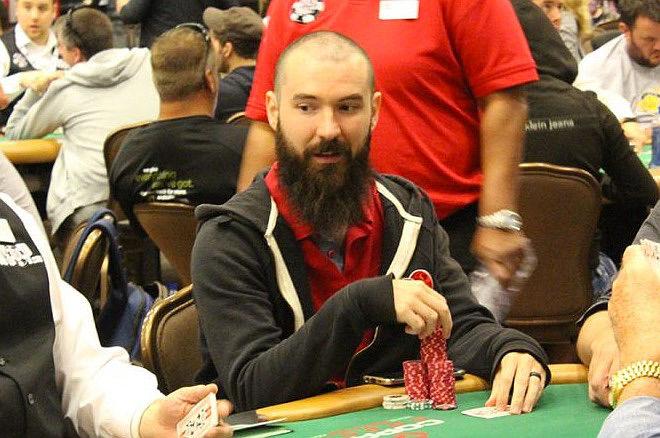
James "SplitSuit" Sweeney has been playing and coaching poker for over a decade. After he got started in 2004 at Syracuse University, Sweeney co-founded Red Chip Poker, and since then has coached hundreds of students, released hundreds of training videos, and has written four books.
And Sweeney isn't slowing down. Recently he adapted Ed Miller's book Poker's 1%: The One Big Secret That Keeps Elite Players On Top into an accessible video series.
PokerNews caught up with Sweeney to discuss his course The One Percent as well as other upcoming projects at Red Chip Poker.
PokerNews: Why did you want to adapt Ed Miller's book into a video series?
James Sweeney: While preparing to attend the Solve For Why Academy, I read Poker's 1% twice. I had heard good things about the book and it seemed like required reading to protect my own ranges and have a more frequency-oriented strategy in a tougher line-up.
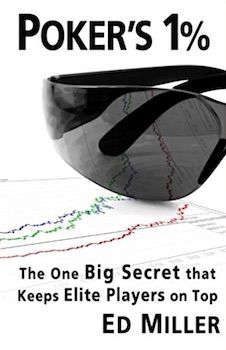
Poker's 1% is a fairly short book that reads quickly and simplifies a complex part of the game that players actively avoid. The book peels back the top layer of poker — hole cards and absolute hand strengths — in order to show the inherent frequency math behind the game. It's something of a gateway into GTO, but nothing you need a Ph.D. for.
The book lays out a big-picture strategy — not just a collection of tactics — that guides your ranges and frequencies throughout a hand. I thought this content was really important, but that the book needed some expansion in certain spots to help bridge theory and practice.
So I texted Miller, asked for permission to turn his book into a video course, and here we are!
In a nutshell, how would you summarize the book and your subsequent video series? What's "the secret" of "the 1%"?
The "secret" isn't much of a secret: the best players are very frequency-focused. They protect their own frequencies and exploit their opponent's frequency-errors.
Most players are too focused on their own hole cards. Because making a strong hand is rare, they end up checking and/or folding too often. Each fold takes their equity share from "x" percent to zero percent, and when they fold too often, they make themselves targets to extra bluffs in the future from anyone who's paying attention.
Both the book and video series lay out clear rules for folding less and contending more often. This helps you actualize more of your equity during each hand and protects you from allowing your opponents to bluff you with impunity.
Miller suggests that you usually want to bet with a "polarized" range — that is, with both strong hands and bluffs that can turn into strong hands. But you also mention that, in some spots, you should bet with a "depolarized" range of strong and semi-strong hands. Can you give some examples of when a depolarized range might be better to use?
This is one of those areas where I felt some expansion from the original text was especially helpful.
Poker's 1% lays out frequency rules and basic range composition rules that create a sort of "back pocket" strategy. You can always revert back to this strategy when necessary — but with specific information you may veer away from it.
Put another way, your "back pocket strategy" is +EV, but not always optimal.
Take a basic flop continuation-bet spot. You raise preflop, the BB calls. The BB is fishy and a massive calling station postflop — any pair is good enough for them and all their draws need to see the river. On a flop of Ax10x6x your back pocket strategy may have you checking behind hands like JxJx and 10x8x-suited.
But against a calling station who will call flops and turns with 8x7x-suited, and who will call down to the river with 6x4x, why not depolarize your range? Here you could trade out bluffing combos for "thinner value" combos and reprioritize your range accordingly.
When in doubt, you could use your back pocket strategy on the flop and bet your strong hands plus viable bluffs until you have a proper frequency of value to bluffs. However, when you have information on your opponent, you will find yourself reprioritizing your value-to-bluff composition in an effort to maximize profit.
Poker's 1% came out in 2014. Does your video series include any changes or updates to the book?
The original text holds up remarkably well. I didn't really need to change anything when making The One Percent video series, but I did feel expansions were required to bridge the theory/practice gap.

I talked to a lot of readers of the book before making the video series, and most agreed the book had inherent value, but they didn't see application in their games. So my goal with the videos was to expand the conversation and teach things from both sides. That way, even if the student doesn't make the immediate changes in their own strategy, they can see the immediate errors in their opponents'.
For instance, when talking about double-barrels, we would look at both what a proper frequency looks like and how the range should be composed. By having extra space in a video series to dissect this spot, we can highlight common errors.
This helps the student not only to double-barrel better in future sessions, but also how to handle double-barrels as well. Since they now know what a proper double-barrel frequency and range composition looks like, they can identify when their opponent is "off" and choose to check-raise more bluffs against the double-barrel instead of folding that medium pair.
Where do you think poker instruction is headed in coming years?
I think you are going to see more personalization, more private masterminds, and more content geared around bridging theory and practice. Players today have a lot of information downloaded in their brain, they just need help making sense of it all and distilling it into a usable strategy. A combination of the three things mentioned above will help that student immensely.
You recently tweeted this: "I've worked on some big projects, but the current @RedChipPoker project that is scheduled for an early 2018 release is so big it's kind of hurting my brain. The game is changing soon." Want to share what's happening?
We are building CORE.
Over the years we've had so many requests for a "poker syllabus." Players — newer players especially — are looking for a system to learn poker quickly. But even seasoned players are looking for a checklist to ensure they aren't missing any crucial pieces to the puzzle.
CORE guides you from basic to advanced concepts, fills in knowledge gaps, and tests you along the way. There are brand-new quizzes (plus leaderboards for top scores!), achievements to earn, and the progression is such that you don't need to ask "what should I work on next?"
We are aiming for a February 2018 launch, so keep an eye out over at Red Chip Poker.
Ben Saxton is a teacher and a writer from upstate New York who has played small stakes poker, both live and online, since the early 2000s. Ben lives in New Orleans and covers poker on the Gulf Coast.


